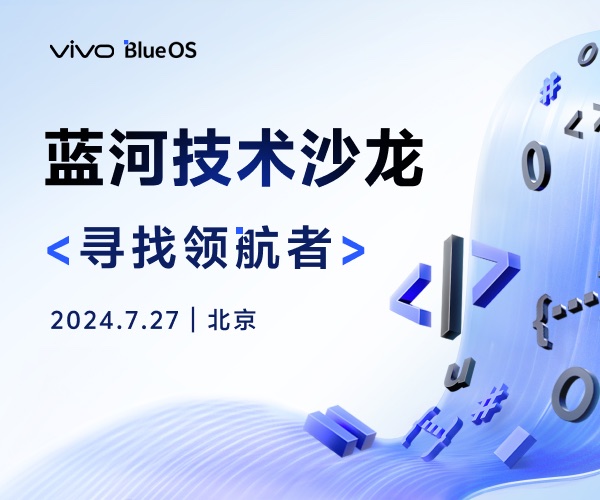Android ListView常用属性及数据绑定显示
首先,创建一个用于显示每一行item的layout,名为item.xml
<?xml version="1.0" encoding="utf-8"?> <LinearLayout xmlns:android="http://schemas.android.com/apk/res/android" android:layout_width="match_parent" android:layout_height="match_parent" android:orientation="horizontal" > <TextView android:id="@+id/name" android:layout_width="120dp" android:layout_height="wrap_content" /> <TextView android:id="@+id/phone" android:layout_width="150dp" android:layout_height="wrap_content" /> <TextView android:id="@+id/amount" android:layout_width="fill_parent" android:layout_height="wrap_content" /> </LinearLayout>
然后,在main.xml中,添加一个ListView数据显示控件,添加id名称为listview
接下来便是进行数据的绑定,常用的为为三种方法,下面ps.getScrollData方法返回一个数据源集合:
private void show1() { List persons = ps.getScollData(0, 10); List<HashMap<String, Object>> data = new ArrayList<HashMap<String, Object>>(); for (Person person : persons) { HashMap<String, Object> item = new HashMap<String, Object>(); item.put("amount", person.getAmount()); item.put("id", person.getId()); item.put("name", person.getName()); item.put("phone", person.getPhone()); data.add(item); } SimpleAdapter adapter = new SimpleAdapter(getApplicationContext(),data, R.layout.item, new String[] { "name", "phone", "amount" }, new int[] {R.id.name, R.id.phone, R.id.amount }); // item表示为之前定义的item.xml,表示将data集合中的每一个对象绑定到些item中,即将data中的每一项绑定到一个视图item上; // 后两个参数表示把结果集中哪些key的值绑定到哪些控件上;(把结果集中key为name对应的对象绑定到视图中id为name的控件上) listview.setAdapter(adapter);//内部处理流程如下 // {int total = adapter.getCount();// 获取得到的数据总数 // int perpage = 7;//获取每一页的显示条目数, // for (int i = 0; i < perpage; i++) { // View view = adapter.getView(i, convertView, parent);//第二次执行时会将前一次执行的view传给convertView; // 显示条目 // }} } private void show2() {//此方法需要一个结果集中的Cursor,要求Cursor中需要有一个名称为_id的字段;所以添加一个获取Cursor的方法如下! Cursor cursor = ps.getCursorScollData(0, 10); SimpleCursorAdapter adapter = new SimpleCursorAdapter(this,R.layout.item, cursor, new String[] { "name", "phone", "amount" }, new int[] {R.id.name, R.id.phone, R.id.amount }); listview.setAdapter(adapter); } public Cursor getCursorScollData(int offest, int maxResult) { SQLiteDatabase db = dbOpenHelper.getReadableDatabase();//因为要求结果集中要有一个名为_id的字,所以SQL语句如下! Cursor cursor = db.rawQuery("select personid as _id,name,phone,amount from person order by personid asc limit ?,?", new String[] { String.valueOf(offest),String.valueOf(maxResult) }); // db.query(table, columns, selection, selectionArgs, groupBy, having,orderBy, limit); return cursor; } private void show3() { List persons = ps.getScollData(0, 10); PersonAdapter adapter = new PersonAdapter(getApplicationContext(),persons, R.layout.item); listview.setAdapter(adapter); }
当每点击一项需要获取此项的相关信息时可以添加此方法:
listview.setOnItemClickListener(new ItemClickListener()); private final class ItemClickListener implements OnItemClickListener { @Override//此方法中第一个参数为显示数据(item项)的控件,在此例子中即为ListView;第三个参数为点击项的位置, public void onItemClick(AdapterView<?> parent, View arg1, int position,long arg3) { ListView lview = (ListView) parent; // show3()方法对应的处理方法 // Person person = (Person) lview.getItemAtPosition(position); // Toast.makeText(getApplicationContext(),person.getId().toString(),1).show(); // show2()方法对应的处理方法 // show2方法中,adapter返回的是Cursor, // Cursor cursor = (Cursor) lview.getItemAtPosition(position); // int personid = cursor.getInt(cursor.getColumnIndex("_id")); // Toast.makeText(getApplicationContext(), personid + "", 1).show(); // show1()方法对应的处理方法 // show1方法中,adapter返回的是Map,再对Map进行操作取出相应的id值 HashMap<String, Object> item = (HashMap<String, Object>) lview.getItemAtPosition(position); int personid = (Integer) item.get("id"); Toast.makeText(getApplicationContext(), personid + "", 1).show(); } }
自定义适配器
public class PersonAdapter extends BaseAdapter { private List persons;// 要绑定的数据 private int resource;// 绑定的一个条目界面的id,此例中即为item.xml private LayoutInflater inflater;// 布局填充器,它可以使用一个xml文件生成一个View对象,可以通过Context获取实例对象 public PersonAdapter(Context context, List persons, int resource) { inflater = (LayoutInflater) context.getSystemService(Context.LAYOUT_INFLATER_SERVICE); this.resource = resource; this.persons = persons; } @Override public int getCount() {// 得到要绑定的数据总数 return persons.size(); } @Override public Object getItem(int position) {// 给定索引值,得到索引值对应的对象 return persons.get(position); } @Override public long getItemId(int position) {// 获取条目id return position; } // ListView有缓存功能,当显示第一页页面时会创建页面对象,显示第二页时重用第一页创建好了的对象 // 取得条目界面:position代表当前条目所要绑定的数据在集合中的索引值 @Override public View getView(int position, View convertView, ViewGroup parent) { TextView nameView = null; TextView phoneView = null; TextView amountView = null; if (convertView == null) {// 显示第一页的时候convertView为空 convertView = inflater.inflate(resource, null);// 生成条目对象 nameView = (TextView) convertView.findViewById(R.id.name); phoneView = (TextView) convertView.findViewById(R.id.phone); amountView = (TextView) convertView.findViewById(R.id.amount); ViewCache cache = new ViewCache(); cache.amountView = amountView; cache.nameView = nameView; cache.phoneView = phoneView; convertView.setTag(cache); } else { ViewCache cache = (ViewCache) convertView.getTag(); amountView = cache.amountView; nameView = cache.nameView; phoneView = cache.phoneView; } Person person = persons.get(position); // 实现数据绑定 nameView.setText(person.getName()); phoneView.setText(person.getPhone()); amountView.setText(person.getAmount()); return convertView; } private final class ViewCache { public TextView nameView; public TextView phoneView; public TextView amountView; } }
下面看看ListView的常用属性
<ListView android:drawSelectorOnTop="false" 设置点击某一项时,点击项的颜色显示在item的上面或不是 android:drawingCacheQuality="auto"
android:cacheColorHint="#00000000" 当设置了背景颜色时,触摸lv会变黑,设置此缓存色为透明即可解决 android:fadeScrollbars="true" 设置滚动时滚动条的自动隐藏 android:transcriptMode="alwaysScroll" 设置当显示大量item的时候,希望最新的条目可以显示到可视范围, android:fadingEdge="none" 消除上下边框的黑色的框 android:scrollbars="none" 设置为none时,将隐藏滚动条
android:fastScrollEnabled="true" 设置显示快速滚动滑块 android:stackFromBottom="true" > 自动显示到列表最底部 </ListView>
ListView默认没有选择模式, 可以设置选择模式为CHOICE_MODE_SINGLE和CHOICE_MODE_MUTIPLE;


